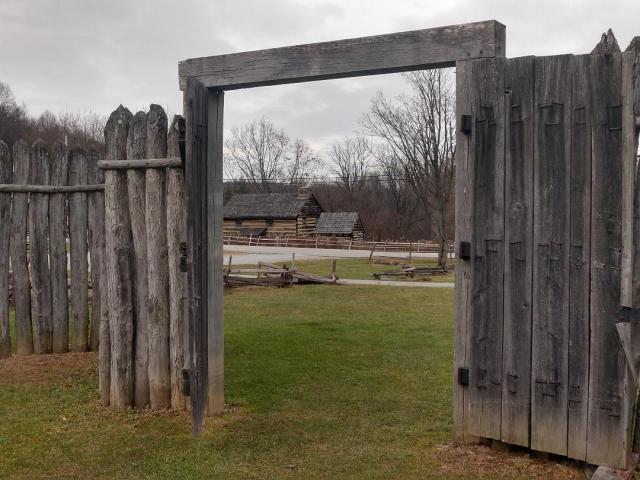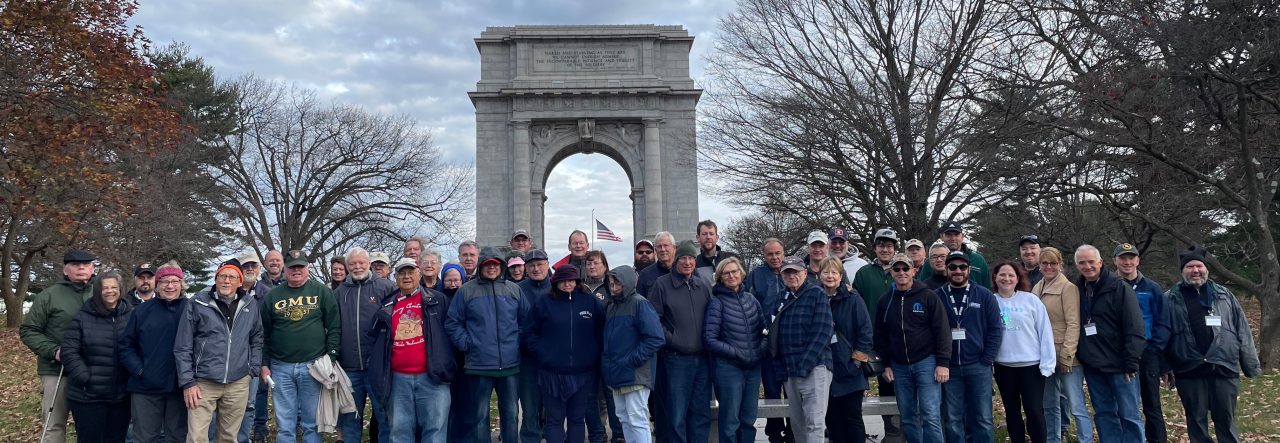Although both states were involved in the Revolutionary effort, Virginia and Pennsylvania were also at war with each other over land west of the Alleghenies. This territory had been claimed by both since the days of their early charters in the 1600s.
During the Revolution, the land claimed by both states had rival governments, courthouses and militias. Pennsylvania’s Hannas Town was the seat of its Westmoreland County, while Virginia’s West Augusta County was headquartered at Fort Pitt.
Throughout the 1770s, rival justices and other county officials were arrested and held in prison at either Hannas Town or Fort Pitt. Each claimed jurisdiction over the other, and saw the other as illegal.
At one point, Pennsylvania Governor John Penn wrote to Lord Dunmore of Virginia that he was “surprised” at Dunmore’s claim on the land, enclosing a map showing it firmly in Pennsylvania. Dunmore responded by denying the claim and explaining it was part of his colony. Penn then wrote that he “request your Lordship neither grant lands nor exercise the government of Virginia within these limits.”

Going in person to Fort Pitt, Dunmore issued a proclamation that, “whereas the Province of Pennsylvania has unduly laid claim to … His Majesty’s territory…. I do hereby in His Majesty’s name require & command all of His Majesty’s subjects West of Laurel Hill to pay a due respect to my Proclamation, strictly prohibiting the authority of Pennsylvania at their peril.”
Penn then issued his own statement, “requiring all inhabitants West of Laurel Hill … to pay obedience to the laws of this government.”
Once the Revolution broke out both governors were too distracted to continue their letter exchanges and the matter dropped, temporarily.

Both states recruited here for its Continental regiments, and rival militias clashed occasionally. In 1777 Virginia divided West Augusta County into Yohogania, Ohio, and Monongalia Counties, each with their own courthouse.
The Continental Congress saw the rivalry as a distraction and source of friction that undermined the war effort, and encouraged both states to come to an agreement. Delegates from both met and discussed boundary surveys, reaching an agreement in 1780.
The two states agree to extend the Mason Dixon Line to the west. This had been halted in the Allegheny Mountains well to the east of the disputed area. Pennsylvania agreed to make its western boundary Five Degrees Longitude from the start of the Mason Dixon survey, in Delaware. All lands south of the Ohio River and south and west of the Mason Dixon line would then belong to Virginia (no one really knew at the time how much that would be, but this is how the thin panhandle of western Virginia –now West Virginia- was created).

In 1781, the year of the siege at Yorktown, surveyors worked on the line, clearing a fifteen feet wide path, notching P/V on trees and rocks. By Christmas the line reached the western limit of Pennsylvania’s land, and the next year the line was run north to Lake Erie.
Because most of the disputed territory came to Pennsylvania, many Virginia settlers were outraged. Some moved. Others resisted. A large group wrote their governor in Richmond: “You have not by proclamation or otherwise given us public notice that you have cast us of and given us up to Pennsylvania, this makes us think we are bound by our oath not to pay allegiance to any other state until we are discharged in a regular way from our former allegiance, and for these reasons we have not submitted to their authority”
Tension lingered for decades here among those who felt wronged. Pennsylvania agreed to recognize the land claims of Virginians and allowed them to keep their slaves. Yet a Westmoreland County tax assessors report noted that county officials were harassed: “drove them from their duty, fired guns at them, and say that they will not pay taxes or be obedient to our laws.”
Much of this tension emerged again during the Whiskey Rebellion in the 1790s.

Good scholarship. I enjoy your articles.
LikeLike
Thanks Kip!!
LikeLike